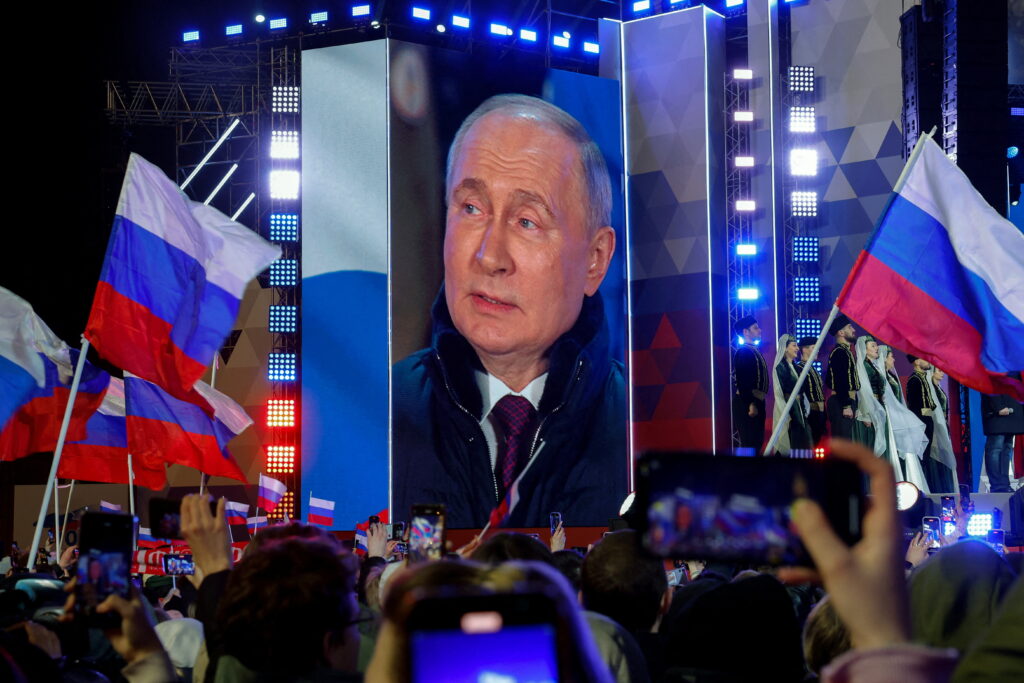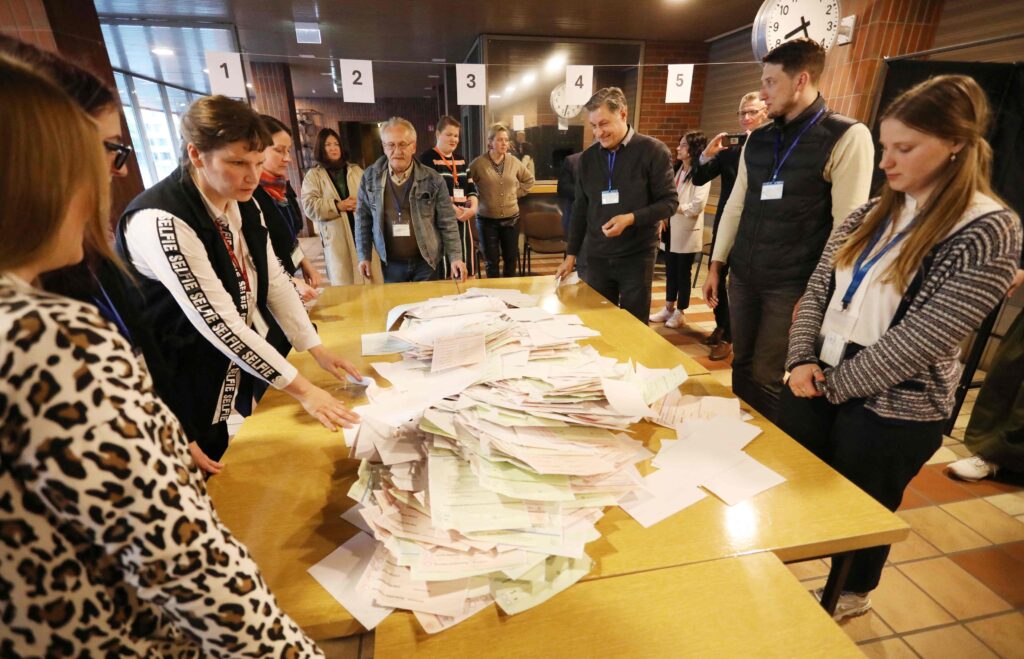In 2017, the Ministry of Transport of the Russian Federation and Rosavtodor (the Federal Road Agency) launched the federal programme ‘Safe and Quality Roads’, designed to improve the quality of roads and the transport network by 2025. About a quarter of Russian metropolitan areas with a population of over half a million people are participating in the programme. United Russia has declared the programme a priority along with such policies as support for young families, development of agriculture and children’s sports as well as urban development, etc.
The timing of the programme’s launch coincided with the federal election campaign to the State Duma. The use of federal programmes to achieve desired results at the ballot box, stimulate turnout and the loyalty of regional and local administrations is a familiar strategy in electoral authoritarian regimes. Similar programmes (e.g. PRONASOL and PROGRESA) were repeatedly announced in Mexico under the guise of efforts to combat poverty when the Institutional Revolutionary Party was in power. Funding for municipalities under these programmes was conditional on voting results.
The autonomy of local government in Russia was practically destroyed after the vote over the constitutional amendments in July 2020. The amended Article 132 of the Russian Constitution stipulates that local government and state authorities form ‘a unified system of public authorities’. Prior to this, for 20 years, beginning with the Kozak reform, numerous steps had been taken to cut funding for local governments from sources independent from the regional and federal budgets. On the eve of the upcoming election, however, a window of opportunity seems to be opening for the municipal authorities to raise additional funds, including for fulfilling their obligations to provide goods and services locally. Is this indeed so?
To answer this question, let’s look at the accountability of the heads of municipalities and the incentives that drive them. In 2014, a new model for appointing the heads of municipalities was introduced based on competitions decided by local city councillors. Elected mayors and city managers have gradually been replaced by appointed ones. By 2017, the heads of municipalities were directly elected in as few as 16% of urban settlements and 15% of municipal districts. The heads of municipalities selected by the commissions were appointed in 53% of cities and 48.5% of municipal districts.
The quality of governance and provision of benefits are often associated with public accountability: the more opportunities voters have to influence the composition of the administration, the more incentives the administration has to listen to the needs of the local community. In the transition to the model of governance by city managers and heads of municipalities selected in competitions, the accountability mechanism is changing and, in theory, local administrators will react to the wishes and expectations of those their tenure depends on. For the heads of municipalities, these are primarily gubernatorial administrations and local elites. The criteria for judging the effectiveness of regional administrations can differ substantially from the collective preferences of local voters. Moreover, there is evidence that political loyalty, expressed in votes in federal elections, in some regions may be linked to increased money transfers or greater access to additional grants in the subsequent budgetary period. The latter indirectly suggests that loyalty is becoming more important than the effectiveness of governance.
The situation may be different in the case of elected heads of municipalities: their legitimacy still formally depends on voters. The link between local administrations and residents is usually stronger in smaller settlements and municipal districts than in larger cities and regions. It can be assumed that, in such cases, priorities will be set differently: in addition to ensuring electoral loyalty, elected heads will try to respond to at least some requests from local residents (the need to repair a school or kindergarten, build a sports ground, etc.). It is also noteworthy that the pressure to ‘deliver on votes’ varies depending on the election campaign or region.
Recently, my colleagues from the European University at St. Petersburg and I analysed two indicators to see who was doing better in governance. The first parameter is the share of repaired roads from the total length of local roads, and the second is the percentage of citizens resettled from dilapidated housing (from the total number of people in need of resettlement). According to Presidential Decree No. 607, the quality of local roads and housing facilities is included in the list of indicators of local government effectiveness. Based on Rosstat’s Municipalities Database, we tracked how the ratio of repaired roads to the total length of local roads and the proportion of citizens who have improved their housing conditions have changed. The latter indicator demonstrates a municipality’s ability to effectively address the problem of dilapidated housing, including its ability to negotiate better conditions with the local business community and developers. In turn, road repair is a litmus test for the heads of municipalities: roads, unlike dilapidated housing, are visible to more citizens regardless of their level of income.
Figure 1 shows how the share of repaired roads has changed since 2012. We can see the difference between urban settlements and municipal districts: in cities, road quality has improved by an average of 8 percentage points (from 51% to 59%), while in districts the quality remains virtually unchanged (from 46% to 47%). The ‘Safe and Quality Roads’ programme may have contributed to the improvement of road surfaces in urban settlements, but the trend was noticeable even before its launch in 2017.

In contrast, the share of residents of municipal districts who have improved their housing conditions has decreased from 16% to 11% of the total number of those in need of resettlement (Figure 2). In cities, the share of such citizens is about 7% (a peak of 9% was observed in 2016).

From the point of view of the quality of the provision of public goods, does it matter whether the head of a municipality was elected or appointed? Figure 3 shows the average values for the share of repaired roads and the percentage of citizens who have improved their housing conditions. The figures are calculated separately for cities and municipal districts.

Firstly, we see that cities and districts differ significantly in terms of the quality of public goods. In cities, the quality of road surfaces is much higher, but municipal districts are doing better in terms of resettling residents of dilapidated housing (which is less widespread in districts in general). Secondly, contrary to expectations, directly elected mayors in urban settlements are those who underperform the most when it comes to handling roads. Municipal heads selected by commissions in competitions show the best performance in municipal districts. There are virtually no differences between city managers and heads appointed by commissions in competitions.
The variation among elected city mayors is large, suggesting that some mayors are doing just as well as city managers or appointees selected by commissions. When it comes to dilapidated housing, however, the picture is black-and-white: elected mayors – especially in cities – do a better job of resettling residents from dilapidated housing than appointees. Moreover, municipalities run by appointees perform worse in both cities and municipal districts.
It can be assumed that the federal programme launched in 2017 may have contributed to better road quality in 2018. However, it appears that the programme included urban areas where road quality was already higher than the national average.
Is it true that elections improve the quality of local governance? Or is a centralised management system involving appointees more effective? Directly elected mayors in the current governance system improve the quality of the provision of only some goods. At the same time, local roads are better handled by managers selected in competitions organised by commissions. However, this conclusion should not be interpreted as evidence of the success of the competition-based model. Road repairs are the least costly and most visible way to demonstrate the competence of management before elections. Both appointees and elected heads of municipalities have generally performed poorly. In the context of local government centralisation, the quality of governance is largely independent of whether the head of a municipality is elected or appointed. At the same time, municipal heads selected in competitions secure, on average, slightly more votes for United Russia and are more successful in ‘optimising’ budget expenditures. Thus, the 2014 reform has led to cost optimisation, but has not universally improved the efficiency of delivering public goods.










